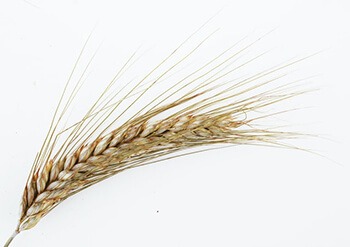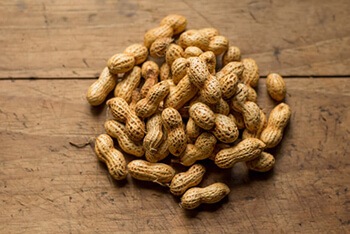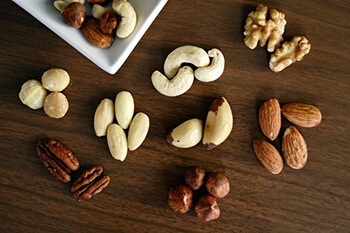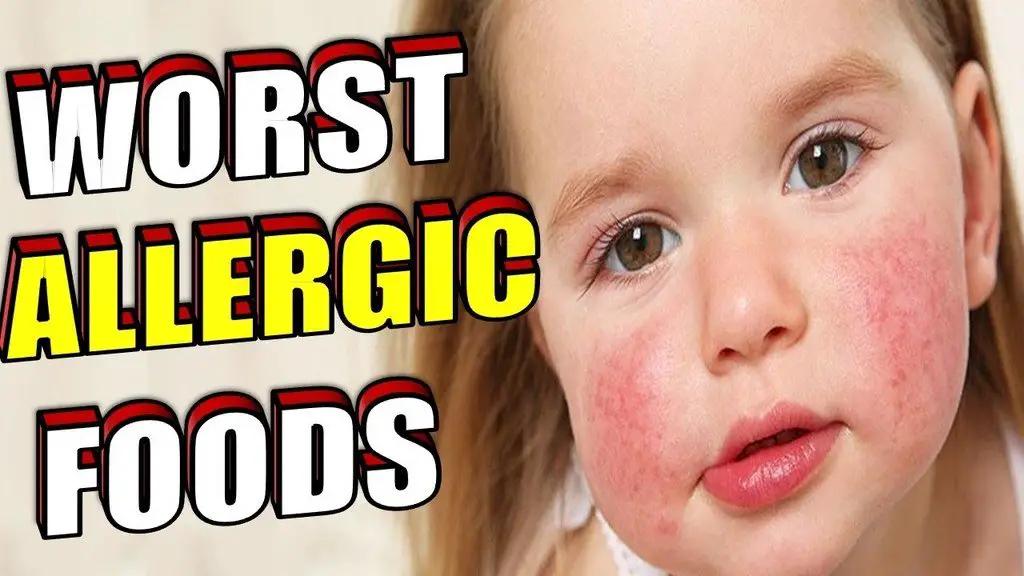Food allergies are extremely common – so common, in fact, that 5% of all adults are thought to suffer from them. They’re characterised by a number of symptoms, including itching in the mouth, a skin rash, swelling of the lips, tongue, and throat, wheezing and difficulty breathing, abdominal pain, diarrhea, and light-headedness.
In many cases, food allergies are incredibly unpleasant, but not life-threatening. In others, food allergies can cause severe reactions that need to be treated immediately.
Food allergies vs intolerances
It’s important to know the difference between food intolerances and allergies. Physical reactions to certain foods are common, but most are caused by a food intolerance rather than a food allergy.
A food allergy causes an immune reaction that affects various organs in the body. On the other hand, food intolerance symptoms tend to be less serious and are often related to digestion.
If you have a food intolerance, you may be able to eat a small amount of the offending food without too much trouble. When you’re allergic to a type of food, you’ll need to avoid it entirely in order to stay safe.
Foods that cause allergic reactions
There are a number of foods that are known for causing allergic reactions in adults and children. We’re going to cover them all in this video.
1. Milk

Let’s start off with milk allergies. When you’re allergic to milk, your immune system has an adverse reaction to the proteins you find in milk, called casein and whey. Keep in mind that a milk allergy is not the same thing as being lactose intolerant, which results from an inability to digest the lactose in milk and other dairy products.
So, how common are milk allergies? They’re actually thought to be the most common in America, but only when children are concerned.
Interestingly, while milk allergies are thought to affect 6 percent of kids, about 80 percent of those will outgrow the allergy when they get older. This essentially means that while a child may be allergic to milk, as an adult, they may be able to drink milk without trouble.
If you have a milk allergy, you need to know what to avoid. Obviously, milk is out of the picture, as well as products that contain milk, like cheese, yogurt, milkshakes, and ice cream. With other foods or dishes, you might not actually know they contain milk unless you read the ingredients list. You’d be surprised at just how many products contain traces of milk.
2. Eggs

Moving onto egg allergies – being allergic to eggs actually means that your immune system is triggered by the specific proteins that eggs contain. Your allergy could only be related to the egg yolk or the egg white, or both. If you think you have an egg allergy, it’s best to play it safe and avoid the whole egg rather than test the theory.
Again, egg allergies are another common one, with 2.5 percent of children diagnosed with the condition. By the age of 5, around half of these children have outgrown the allergy.
When a food contains traces of egg, it should be written clearly on its ingredients list. The more obvious foods containing eggs include cakes, mayonnaise, and baked goods like quiche. You should also look out for hidden eggs in products like some types of pasta and noodles, and marzipan.
3. Wheat

Let’s move on to wheat allergies. People often confuse wheat allergies with celiac disease, as the two are fairly similar, but wheat allergies refer to an allergic reaction to wheat protein, while celiac disease is an autoimmune disease that is triggered by eating gluten. The two are not often linked, despite gluten being the main protein in wheat.
Wheat allergies are actually quite rare in adults and are more common in children. Around 0.4 percent of children are thought to be allergic to wheat, and the majority will outgrow the allergy by the time they’re adults.
A variety of foods contain wheat as an ingredient, so it’s worth checking a product’s food label to make sure it’s wheat-free. Foods like bread, pasta, cereal, and crackers all contain wheat. Lesser-known wheat-based foods include beer, ice cream, and some chocolate bars.
4. Peanuts

Onto another common allergy – peanuts. Peanut allergies affect both adults and children. The protein in peanuts is similar to that in tree nuts, so if you have a peanut allergy, you’re more likely to have a tree nut allergy as well.
Studies have found that peanuts are responsible for thousands of allergic reactions across the world, and peanut allergies increased 21 percent since 2010. Peanuts also cause the highest rates of anaphylaxis, a serious reaction that, in people with nut allergies, can cause, vomiting, difficulty breathing, and shock.
For the majority of people, peanut allergies are lifelong, and can’t be outgrown with adulthood. When you have a peanut allergy, you’ll have to avoid products that contain even traces of peanuts – which, if it’s been produced in a factory that handles peanuts, it probably does. Get into the habit of checking chocolate bars, cereals, and other processed snacks to ensure they’re nut-free before eating them.

5. Tree Nuts

Now let’s talk about tree nuts. Like peanuts, both adults and children can be allergic to tree nuts. These include walnuts, pecans, pistachios, hazelnuts, and almonds. Normally, if you suffer an allergic reaction to one type of tree nut, chances are, you’re allergic to them all. You’re more likely to experience anaphylaxis from tree nuts than you are from milk, wheat, and eggs.
It’s estimated that around 0.8 percent of children and 0.6 percent of adults have a tree nut allergy. Remember also that you’re more likely to be allergic to tree nuts if you already have a known peanut allergy. A tree nut allergy can present at any time, whether you’re an adult or a child, and it’s most likely to be a lifelong condition.
Obviously, if you’re allergic to tree nuts, it’s essential that you avoid all walnuts, pecans, pistachios, hazelnuts, and almonds, and products that contain these foods. You can most commonly find tree nuts in biscuits, cereals, crackers, and chocolates.
Some lesser-known tree nut-containing products include pesto sauce, some curry sauces, and barbecue sauces. You might also find tree nut oil in some hair and body care products.
6. Soy

Let’s take a look at soy allergies. If you’re allergic to soy, you’ll experience an adverse immune reaction to the proteins in soybeans. Soy allergies generally result in less severe reactions, but, as in the case of all allergies, there is the potential for a life-threatening reaction.
Soy tends to be a more common food allergy in children. It’s estimated that 0.4 percent of children are allergic to soy. 50 percent of these children should outgrow a soy allergy after one year, and most will outgrow it by the age of 10.
7. Fish

Moving onto fish allergies – these are characterised by an immune response to the proteins in finned fish, like tuna, cod, halibut, and salmon. You can have a fish allergy and not a shellfish allergy, although some people have both. While you’ll normally experience an allergic reaction after eating the fish, some people get it from touching or even inhaling in vapours while the fish is cooking.
It’s thought that around 0.2 percent of children have a fish allergy, while it affects and 0.5 percent of adults. It’s common for a fish allergy to develop during childhood, but that’s not to say it can’t also first occur in adulthood. If you have a fish allergy, it’s unlikely that you’ll outgrow it with age.
When you’re allergic to fish, you’ll certainly need to avoid finned fish and products containing finned fish. You might find that you’re allergic to one species of fish and not the other, but generally, salmon, tuna, and halibut are the most common problematic fish for people with fish allergy.
If you’re not sure which fish you’re allergic to, it might be best to hold off on consuming any fish and speak to your doctor in the meantime.
8. Shellfish

Finally, let’s look at shellfish allergies. People often lump these in the same boat as fish allergies, but a shellfish allergy is often separate in its own right.
If you don’t know much about shellfish, keep in mind that they’re divided into two types: crustacean, which includes shrimp, crab, and lobster; and mollusks, which includes clams, oysters, mussels, and scallops. You’ll most likely experience an allergic reaction from crustacean shellfish, and symptoms can be severe.
60 percent of people are thought to experience their first adverse reaction to shellfish in adulthood. Around 2 percent of adults have a known shellfish allergy presently. This type of allergy tends to be lifelong once it has developed.
According to food regulatory laws, the specific crustacean shellfish has to be labeled as an ingredient in packaged food. Note that because mollusks aren’t considered a major allergen, they might not be fully disclosed on a product label.
If you have a shellfish allergy, it’s probably best to avoid seafood restaurants entirely in case of cross-contamination.
What to do if you suspect a food allergy
As many food allergies can come on suddenly, in childhood or adulthood, you should never take a suspected allergy lightly. Speak to your doctor straight away if you think you or your child might be experiencing an allergic reaction.
Remember that in some cases, allergic reactions can be deadly without prompt treatment. If you experience trouble breathing, swelling in your mouth or airways, or a sensation of dizziness or light-headedness, seek medical support immediately.
Conclusion
While these are the more common foods that cause the most allergic reactions, there are also a number of lesser common foods, which may be more difficult to identify. These include red meats like beef, pork, and lamb, sesame seeds, avocado, marshmallows, corn, mangos, dried fruit, and hot dogs.
Eating a diet that excludes an allergy trigger food is easier than you might think. There are plenty of alternatives for common causes of food allergies, like milk and wheat.
The market has acknowledged the demand for milk-free, nut-free, wheat-free, and shellfish-free products, and has produced more of them for the consumer’s benefit. You shouldn’t have too much trouble swapping your most basic products for those that are allergy-friendly.
It’s illegal for food labels to not clearly identify any ingredients that are one of the major food allergens or a protein derived from a major food allergen. If you’re unsure whether a product is allergen-free or not, visit the product’s website or contact the manufacturer directly.

